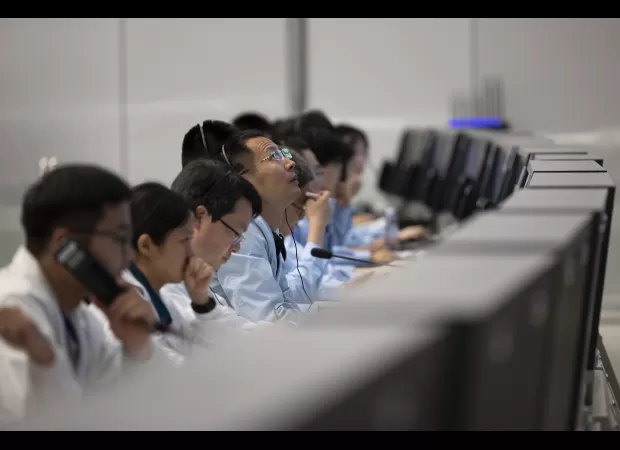China successfully completes mission to collect moon rocks
Chinese spacecraft lands on far side of moon to gather samples and compare it to the more familiar near side.

On a serene Sunday morning in Beijing, a Chinese spacecraft made a historic landing on the far side of the moon. Its mission? To collect valuable soil and rock samples that could potentially reveal fascinating differences between the lesser-known region and the more familiar near side.
At precisely 6:23 a.m. Beijing time, the landing module gracefully touched down in the South Pole-Aitken Basin, a massive crater that has long piqued the curiosity of scientists and space enthusiasts alike. This momentous achievement was announced by the China National Space Administration, marking the sixth successful mission in the Chang'e moon exploration program. The program, which is named after a Chinese moon goddess, has been a source of great pride for the nation.
This particular mission, aptly named Chang'e 6, is the second in the program to bring back samples from the moon. The first, Chang'e 5, accomplished this feat from the near side last year. As China vies for dominance in the realm of space exploration, this mission is just one step towards their ultimate goal of putting a person on the moon before 2030. If successful, they will become only the second nation in history to do so, following in the footsteps of the United States.
However, this race to the moon is not without its competitors. The U.S., still a leader in space exploration, along with others such as Japan and India, pose a significant challenge to China's aspirations. In recent years, China has made notable strides in their space program, including launching their own space station and regularly sending crews there.
Meanwhile, the U.S. has been facing setbacks in their efforts to utilize private-sector rockets for space missions. Just yesterday, a computer malfunction caused the launch of Boeing's first astronaut flight to be postponed. And earlier on Saturday, a Japanese billionaire had to cancel his plans to orbit the moon due to uncertainties surrounding the development of a mega rocket by SpaceX, which NASA plans to use for their own moon mission.
As for China's current mission, the lander will utilize a mechanical arm and a drill to collect up to 4.4 pounds of surface and underground material over the course of two days. Once gathered, an ascender on top of the lander will transfer the samples to a metal vacuum container, which will then be brought back to an orbiting module around the moon. Eventually, the container will make its way back to Earth, landing in the deserts of China's Inner Mongolia region around June 25.
Exploring the far side of the moon presents unique challenges, as it does not face the Earth and therefore requires a relay satellite to maintain communication. Additionally, the terrain is much more rugged, with fewer flat areas suitable for landing. Yet, despite these obstacles, China has once again proven their capabilities and determination in the realm of space exploration.






